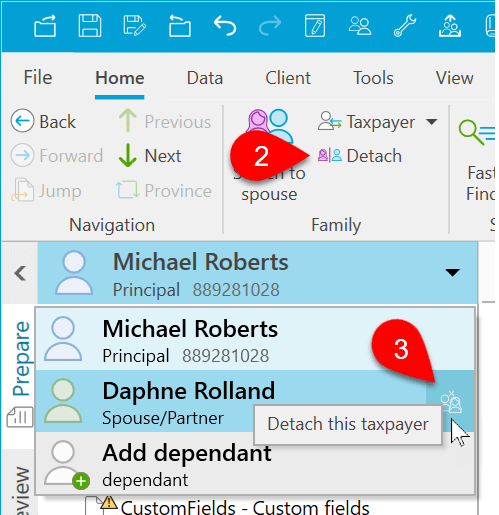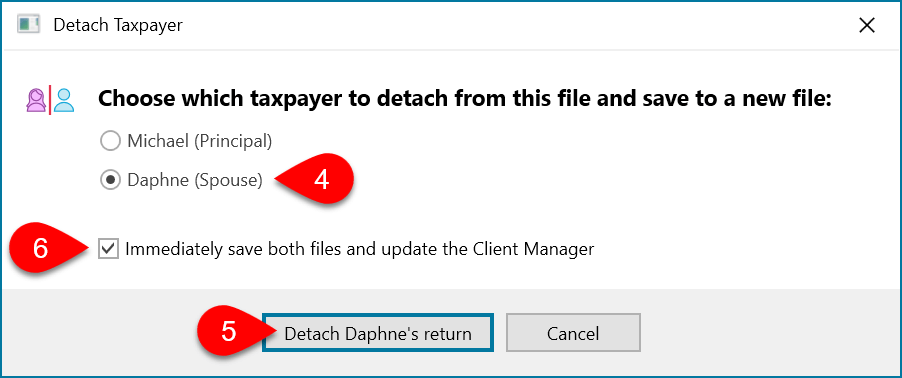Updated: 2024-12-11
When you’re preparing the tax returns for both the principal taxpayer and spouse/partner, couple the returns so that TaxCycle can optimize the tax credits and share the information.
If you carried forward a coupled return from the prior year—whether from TaxCycle or another professional tax software—TaxCycle automatically creates a coupled return for the current year.
In TaxCycle, coupled and family returns are always saved in one file. This makes it easier to manage the files, as you can’t accidentally break a link between returns by moving one of the linked files.
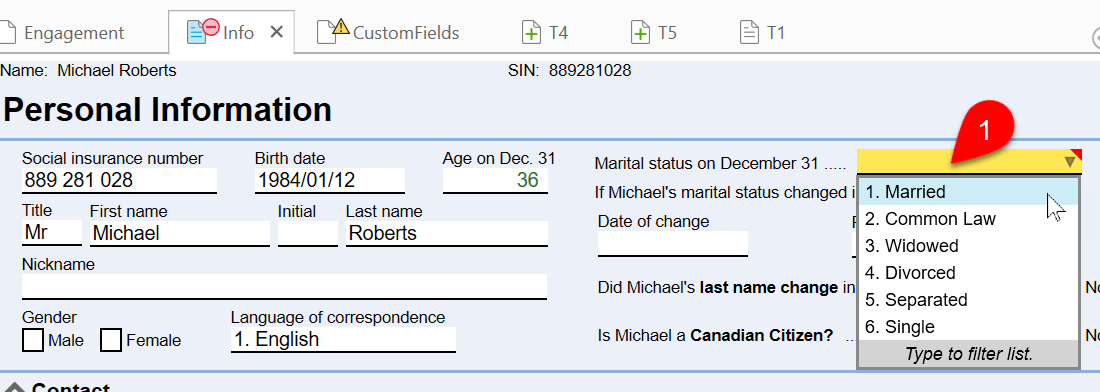
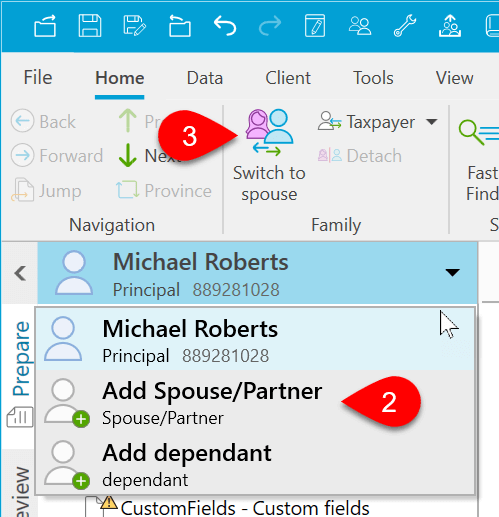
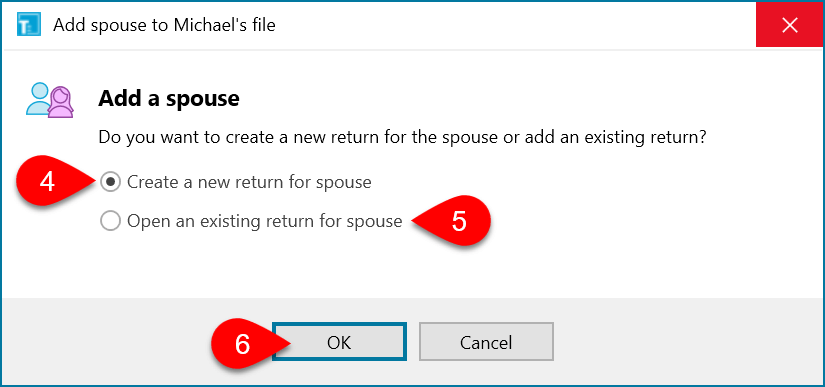
If you are preparing a return dependants who are married or common-law, do not couple those returns. Read the Dependant and Family Returns help topic for instructions on how to trigger optimizations between those dependant spouses.
If you aren’t preparing the spouse/partner tax return, do not couple the returns. Instead, set the marital status for the principal taxpayer to married or common-law and then complete Schedule 2 to enter spouse’s tax information.
Do not couple the returns if the principal taxpayer was a resident for the full year and the spouse was a non-resident for the full year. Both taxpayers must have the same residency to have a coupled return.
Only complete a return for a non-resident spouse if he/she earned income that was taxable in Canada and that was not already subject to withholding taxes. Examples include employment income, self-employment income, or capital gains. Dividends, interest and rental income would already have been subject to withholding taxes.
You may couple returns if the spouse arrived in or left Canada during the year. Add the entry or exit date on the spouse’s Info worksheet and use the spouse’s Immigrant/Emigrant worksheet to enter the details of income earned before/after entering/exiting Canada and determine whether the spouse’s non-refundable tax credits can be prorated.
For detailed instructions on preparing tax returns for individuals and couples who are non-resident or part-year residents, please read the Immigrants, Emigrants and Non-Residents help topic.
